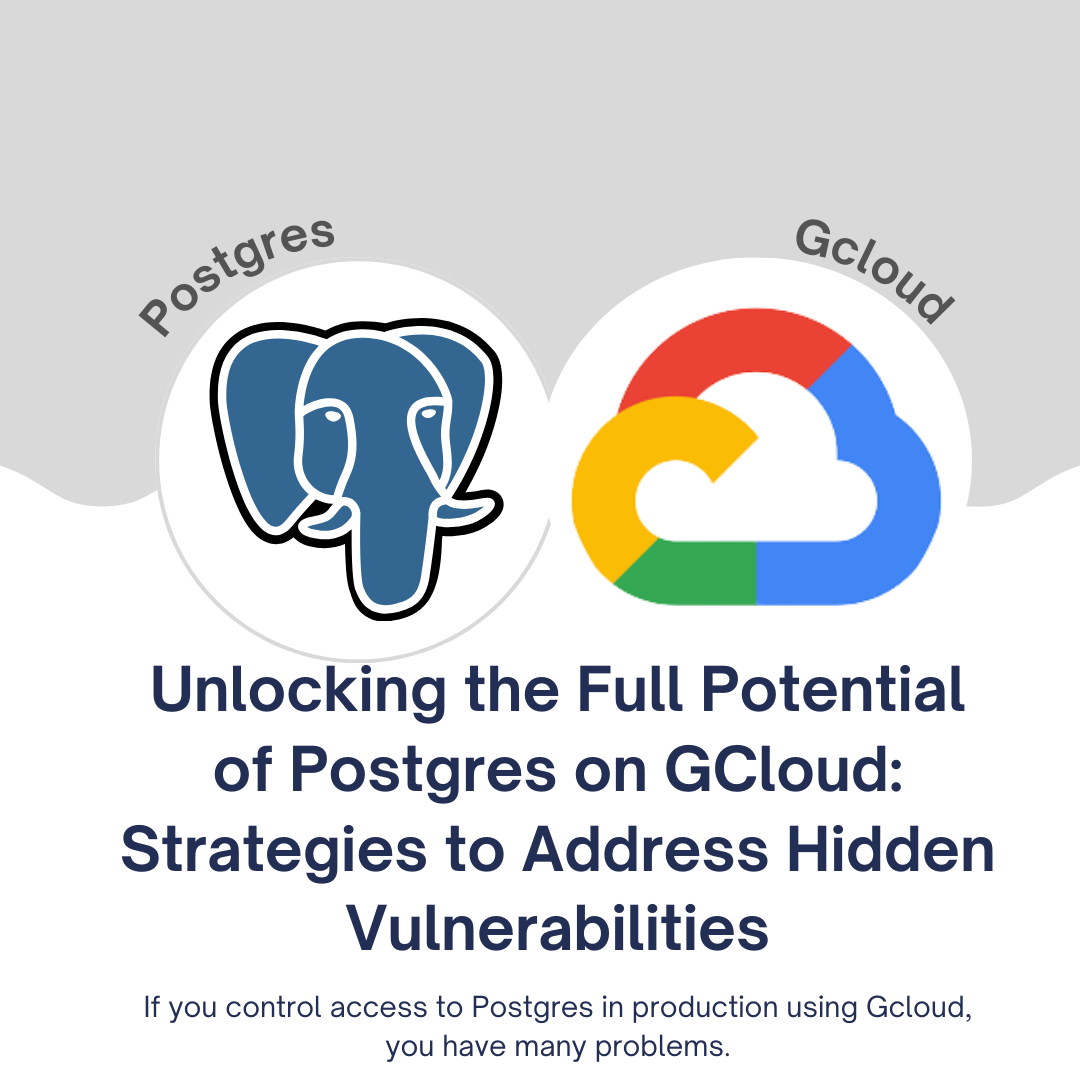Unlocking the Full Potential of Postgres on GCloud: Strategies to Address Hidden Vulnerabilities

Introduction
Controlling access to Postgres in production using GCloud can be a complex task. While it offers many advantages, it also poses significant challenges. In this article, we will explore the five major issues that organizations face when managing Postgres access through GCloud. We will delve into their impacts and suggest practical strategies to mitigate these challenges. Ensuring secure and efficient access to Postgres is crucial for maintaining product speed and data integrity.
The Challenges of Postgres GCloud Access
Inefficient Access to Engineers
- Fast access to the right engineers in a production environment is vital for maintaining product speed and resolving incidents promptly.
- Troubleshooting, bug fixes, and incident resolutions depend on swift data access.Impact: Inefficient access hampers productivity and can lead to costly delays in resolving issues.
Inadequate Access Solutions
- Many teams employ suboptimal methods for granting access to Postgres, leading to security risks and inefficient workflows.Impact: Suboptimal access solutions can compromise data security and disrupt operations.
Building Infrastructure Pain
- Creating infrastructure for Postgres access using GCloud can be a cumbersome process.Impact: Cumbersome infrastructure setup can lead to delays and operational inefficiencies.
Hidden Vulnerabilities in Access Management
- Several crucial components are often overlooked in access management, posing hidden vulnerabilities:
- Single Sign-on (SSO) & Multi-Factor Authentication (MFA)
- Audit Trials and Personally Identifiable Information (PII) protection
- Compliance (GDPR, PCI, SOC2, and HIPAA)
- Developer ExperienceImpact: Neglecting these components exposes organizations to significant security risks and compliance issues.
Addressing Postgres GCloud Access Challenges
To address these challenges effectively, consider the following steps:
Prioritize the 80/20 Rule
- Start by incorporating Postgres into systems you already manage.
- Leverage existing tools, such as Google Workspaces, for Single Sign-on (SSO) integration.
- Explore Cloud Shell solutions from AWS/Google Cloud or consider Runops for recording Postgres sessions.
- Avoid making SSO implementation a massive project; instead, integrate gradually with Google OAuth.
- Prioritize solving 80% of the problem with one tool rather than using multiple tools for minor solutions.Impact: This approach simplifies access management and reduces complexity.
Industry-Relevant Features
- Tailor your Postgres access features to align with industry-specific requirements.
- Focus on enhancing Developer Experience, SSO, and MFA if your industry doesn't require extensive compliance.
- Streamline access steps to make it as efficient as possible.
- For highly regulated industries like fintech, prioritize compliance features such as PCI before addressing Developer Experience.Impact: Industry-specific customization ensures that access management aligns with regulatory and operational needs.
Unified Access Solutions
- Reduce complexity by managing multiple access points, including Postgres, AWS/GCP, other databases, Kubernetes, and servers, within a single tool.
- Consider tools like Runops that offer comprehensive access management capabilities.
- Trading slightly reduced user experience for unified access management across multiple platforms is preferable to juggling various tools.Impact: Unified access solutions simplify management and improve overall efficiency.
Adding Friction to Unwanted Access Methods
- If current access methods have security issues, add a layer of friction to encourage the ideal access method.
- For instance, introduce a form submission process to discourage rapid but insecure access methods.
- Over time, enhance the preferred access method to be more convenient than the insecure alternatives.Impact: Adding friction to insecure access methods gradually promotes secure practices.
Conclusion
Efficient and secure Postgres access through GCloud is critical for maintaining product speed, data security, and compliance. By prioritizing the 80/20 rule, adapting access features to industry requirements, implementing unified access solutions, and adding friction to unwanted access methods, organizations can strengthen their Postgres GCloud access management and reduce hidden vulnerabilities.
